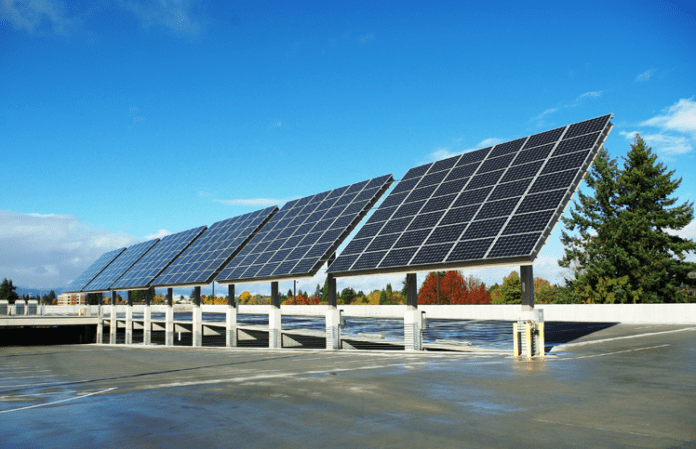122 solar power systems were installed in Clark County in 2014, with another 121 systems installed and 63 more applications being processed as of September 2015. Solar generation has grown from 155 kW in 2013 to 799 kW so far this year.
“What we have going right now is an explosion,” stated Bart Hansen, key accounts manager at Clark Public Utilities.
More than 60 people attended the utility’s recent Solar Tour 2015 kickoff meeting, held last month. Rapid-fire questions and an air of urgency permeated the room. What’s driving this urgency? According to Hansen, it’s the pending sunsetting of two solar incentives.
First, the federal tax credit associated with solar power system installation – 30 percent of the installation cost – expires at the end of 2016. In other words, the system has to be turned on and generating power by December 31, 2016 to receive the credit.
Second, the Washington state cost recovery incentive expires June 20, 2020. This incentive pays homeowners $0.54/kWh (kilowatt hour) for power produced – up to $5,000 per year — as long as the main components of the system are made in Washington.
“We’ll see a significant increase in solar installations between now and the end of 2016, due to the sunsetting of laws and incentives, Hansen said. “It will create a banner year.”
Unless these two incentives are renewed, solar installations will “fall off the cliff,” said Daniel Tracy, president of Woodland-based solar installer Premier Solar NW. But he doesn’t see that happening.
“Solar has moved beyond the inflection point,” Tracy said. “There’s too much big money that is helping to underwrite this stuff and influence Washington, D.C. There’s a lot of inertia.”
Tracy thinks the Washington state cost recovery incentive is too high to be sustainable.
“I’d rather see something in the 30-cent range with a ten-year rolling cycle,” said Tracy. He added that our current governor’s “strong appetite for renewables” makes a continuing cost recovery incentive highly likely, whatever form it may take.
Although attendance was record-setting at the Solar Tour 2015, Tracy said that many people are uninformed about solar power.
“The number of people that are unaware of the incentives is astonishing,” said Tracy.
Aside from “getting the word out,” solar faces other challenges in Washington state, according to Tracy.
“We need more than one manufacturer. ITEK, located in Bellingham, can’t keep up with the demand,” Tracy stated. “More players in the field will reduce margins and costs and lower the entry barrier.”
But the closer the sunset of the cost recovery incentive comes, the value proposition for manufacturers (as well as homeowners) goes down. So manufacturers are reluctant to spend $20 million to build a plant here.
Nevertheless, the solar outlook is positive. According to a document published by Sunbridge Solar, another local installer, “with the lowest prices ever, production-based incentives, and affordable financing, there has never been a better time to go solar in Washington.”
Both Premier Solar NW and Sunbridge offer financing packages, and Umpqua Bank representatives attended the Solar Tour 2015, touting the bank’s GreenStreet lending packages.
The Utility’s net metering program is another benefit to installing a solar power system. Excess kWs generated during the summer are sent to the grid and credited to the homeowner. Then, in winter months when solar generation is lower, the homeowner can draw on those credited kWs – further lowering the energy bill.
Hansen said the first question he gets when he starts a conversation about solar is “Is this real?”
“Yes this is real,” he confirmed. “We really cut checks and people really get a tax credit and people really get a significant reduction on their power bill. It’s a great way for people to invest in their homes and do good things for the environment.”





